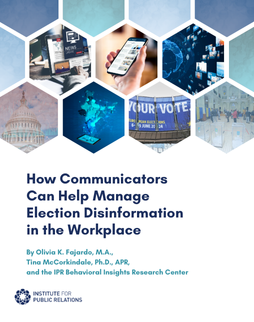The interactive features of social media have attracted considerable attention from both scholars and professionals over the years. Among these features is the functionality of the “like” button. This functionality allows users to express their favorable attitude toward messages others post by “liking” them and also allows them to receive “likes” for their own posts from others in return. Such “liking” behavior permeates everyday life of social media users, but what drives this communication behavior? Specifically, do users’ personality traits and demographics associate with their patterns of giving and receiving “likes?”
In a recent study published by Computers in Human Behavior, Cheng Hong, Dr. Cong Li and I examined the “liking” behavior on Facebook under the theoretical umbrella of gift giving and impression management. We posit that giving and receiving “likes” is similar to physical gift exchange when individuals interact with one another as a strategy of impression management. In the physical world, a gift can be regarded as the giver’s extended self that helps the receiver to form impressions of the giver (Segev, Shoham, & Ruvio, 2013). Nowadays, gift giving can also happen in the realm of online networks. The intersections between people and media objects online have created “social metadata” such as “likes,” posts, and comments that are very similar to actual gifts in the aspects of strengthening social bonds (Skågeby, 2009, 2010).
Previous studies on gift giving and impression management have established the linkages between gifting and personality traits such as self-esteem, empathy, interpersonal generosity, and public self-consciousness as well as demographics such as age, gender, and education (e.g., Leary, 1996; Segev et al., 2013; Schlenkar & Britt, 1999). Extending the framework to the online realm, these personality traits and demographics are examined in the form of online gift exchange behavior as depicted in the frequencies of giving and receiving “likes” on Facebook.
Through an online survey with Facebook users in the United States (N = 421), we discovered the following key findings:
- Interpersonal generosity, a personality trait that focuses on the tendency of expending oneself in relationships (Smith & Hill, 2009) was positively associated with giving “likes.”
- Public self-consciousness, a trait that reflects one’s awareness of the self as viewed by others (Segev et al., 2013) was also positively associated with giving “likes.”
- In terms of demographics, age was found to be positively associated with both giving and receiving “likes,” whereas education was negatively associated with giving “likes.” In addition, women tend to receive “likes” more frequently than men.
Implications for Practice
The prevalent use of social media have brought great opportunities for organizations to communicate and engage with their publics and for individuals to connect with one another. This study provides insights for public relations professionals to better understand the social psychology of social media users in order to engage with the publics more effectively online. For example, knowing that users with higher interpersonal generosity and public self-consciousness are more likely to give “likes,” organizations may create sharable content that cater to individuals with these personality traits to generate more “likes” from their friends during social media campaigns. Organizations may also create content to be shared by women with older age as they are expected to receive more “likes,” according to the findings. Essentially, as “liking” behavior can be interpreted and explained by the mechanism of gift exchange, public relations professionals may borrow insights from offline gift exchange and impression management when cultivating relationships with publics online.
Research Paper:
Hong, C., Chen, Z., & Li, C. (2017). “Liking” and being “liked”: How are personality traits and demographics associated with giving and receiving “likes” on Facebook? Computers in Human Behavior, 68, 292-299. http://dx.doi.org/10.1016/j.chb.2016.11.048
References:
Leary, M. R. (1996). Self-presentation: Impression management and interpersonal behavior. Westview Press, Boulder, CO.
Schlenker, B. R., & Britt, T. W. (1999). Beneficial impression management: Strategically controlling information to help friends. Journal of Personality and Social Psychology, 76, 559–573.
Segev, R., Shoham, A., & Ruvio, A. (2013). Gift-giving among adolescents: Exploring motives, the effects of givers’ personal characteristics and the use of impression management tactics. Journal of Consumer Marketing, 30(5), 436-449. doi:10.1108/JCM-01-2013-0426
Skågeby, J. (2009). Exploring qualitative sharing practices of social metadata: Expanding the attention economy. The Information Society, 25(1), 60-72. doi: 10.1080/01972240802587588
Skågeby, J. (2010). Gift-giving as a conceptual framework: Framing social behavior in online networks. Journal of Information Technology, 25(2), 170-177. doi:10.1057/jit.2010.5
Smith, C., & Hill, J. P. (2009). Toward the measurement of interpersonal generosity (IG): An IG Scale conceptualized, tested, and validated. Unpublished monograph. Retrieved from http://generosityresearch.nd.edu/assets/13798/ig_paper_smith_hill_rev.pdf





